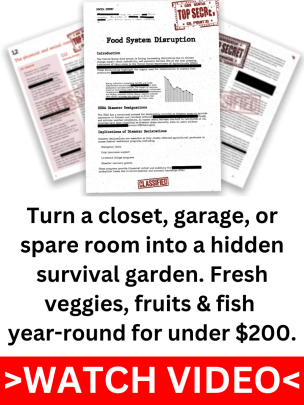Understanding effective food storage methods for long-term preservation is essential for anyone looking to ensure food safety and preparedness.
Understanding Food Storage Methods
The capacity to prepare for unpredictable times is a valuable skill, and effective food storage plays an important role in this. It is critical to keep your food safe, healthy, and available to use at all times. Let’s look at some basic food storage principles that every household should grasp.
Food storage refers to the process of keeping food items fresh and unspoiled. The safety and shelf life of food may be significantly impacted by how it is stored, regardless of whether it is fresh produce, dry items, or perishables.
Knowing several ways to store things is essential for anyone who takes preparedness seriously.
There’s no one-size-fits-all strategy; your choice will rely on the kind of food, the amount of space you have, and your long-term objectives.
The two most popular ways to store perishable goods, such as meats, dairy products, and certain vegetables, are refrigeration and freezing. But since these techniques depend on electricity, it’s a good idea to have backup plans in case of extended power outages.
It is possible to preserve fruits, vegetables, and even some meats through canning and jarring. In order to ensure that food stays safe for years, this technique involves heating food and then sealing it in airtight containers to kill microorganisms.
One of the earliest ways of food preservation is dehydration, which is taking the moisture out of food to increase its shelf life. Properly preserved dehydrated foods can last for months or even years, yet they are lightweight and compact. Vacuum sealing is a useful technique for preserving a variety of goods since it eliminates air from storage bags before sealing, which helps avoid spoiling and freezer burn.
Any food storage plan starts with pantry storage. A well-stocked pantry guarantees a consistent supply of necessities in times when going grocery shopping is challenging. A “first in, first out” strategy lowers the chance of spoiling by ensuring that older items are used before newer ones. Foods like rice, beans, and flour are better shielded from contamination, moisture, and pests when stored in airtight containers. It is simpler to reach and arrange products when pantry space is maximized with shelves, racks, and bins. Labeling containers can also help with rapid identification. Waste can be avoided by keeping an eye on expiration dates and updating your inventory on a regular basis.
Armed with knowledge about storage methods and pantry ideas, you’re well on your way to maintaining a consistent food supply that will get you and your family through any crisis.
Putting Food Safety First
Ensuring the safety of your stored food is critical. Proper storage can help you avoid rotting, contamination, and the loss of valuable materials. Implementing best practices for food safety is critical for avoiding foodborne illnesses and keeping your stored food safe and healthy.
Food safety is essential to your family’s health and wellbeing and goes beyond merely a catchphrase. The last thing you want to deal with in a survival scenario where access to medical care may be restricted is food sickness. By following the right storage procedures, you can lessen the risk of hazardous bacteria, mold, and other pathogens developing from your well-stored food.
The proper temperatures for storing perishable goods are 0°F (-18°C) for freezing and less than 40°F (4°C) for refrigeration. To keep them from spoiling, dry goods should be kept in a cold environment, preferably between 50°F and 70°F. It is advisable to use dehumidifiers or moisture absorbers in storage rooms for grains, flour, and similar dry items, as excessive humidity can promote the growth of mold and cause spoiling. It’s critical to routinely check your food storage for indications of decomposition, such as odd smells, discoloration, or infestation. To stop contaminated things from contaminating other foods that have been preserved, throw them away right away.

Food preservation procedures are essential for increasing the shelf life of your food and keeping it safe to eat over time. Canning involves heating food to destroy bacteria before sealing it in airtight vessels; properly canned items can last for years in cool, dark environments. Dehydration, which removes moisture from food, inhibits the growth of bacteria, yeast, and mold, making it excellent for long term storage. Pickling preserves food in vinegar or brine, where the acidity prevents bacterial growth. Smoking and curing foods use salt or other preservatives to suppress bacterial growth, considerably increasing the shelf life of meats, seafood, and even some vegetables.
Strategic Food Procurement.
Any preparedness plan needs to include a solid food procurement strategy. Whether you want to stock your pantry with more unusual or standard grocery shopping, these ways make sure it stays stocked.
Food procurement is more than just buying groceries; it also entails ensuring a consistent food supply in the face of changing circumstances. Whether dealing with disruptions in the food supply chain or simply minimizing trips to the shop, proactive approaches can help. Groceries are usually the primary food supply for most households, but in survival scenarios, shopping must be done with a long-term perspective. Non-perishable products such as grains, canned goods, and dry foods are crucial, and keeping a food reserve ensures that you have all of the necessities. Bulk purchases are sometimes less expensive than regular excursions to the store. Prioritizing items with extended shelf life, such as rice, beans, pasta, and canned veggies, contributes to a strong emergency stockpile. Nutrient-dense foods include nuts, seeds, and freeze-dried fruits are especially significant since they offer vital vitamins and minerals that are necessary for life.
For efficient food procurement, it is essential to comprehend the food supply chain. The entire process, from food manufacturing to the grocery store shelf, is included in the supply chain. Events like pandemics, natural disasters, and unstable economies can easily break this chain, resulting in shortages and higher prices. By keeping up to date with the food business and any possible disruptions to the supply chain, you may predict shortages and modify your buying strategy accordingly. It might be dangerous to rely just on one grocery store or supplier, so look into co-ops, direct purchases from nearby farms, and local farmers’ markets as ways to diversify your sources. If you can, you can increase your control over your food supply and lessen your need on other food sources by cultivating your own vegetables, herbs, or small livestock.
Adopting a broad food buying strategy keeps your household well-stocked and ready for unforeseen occurrences or emergencies.





















